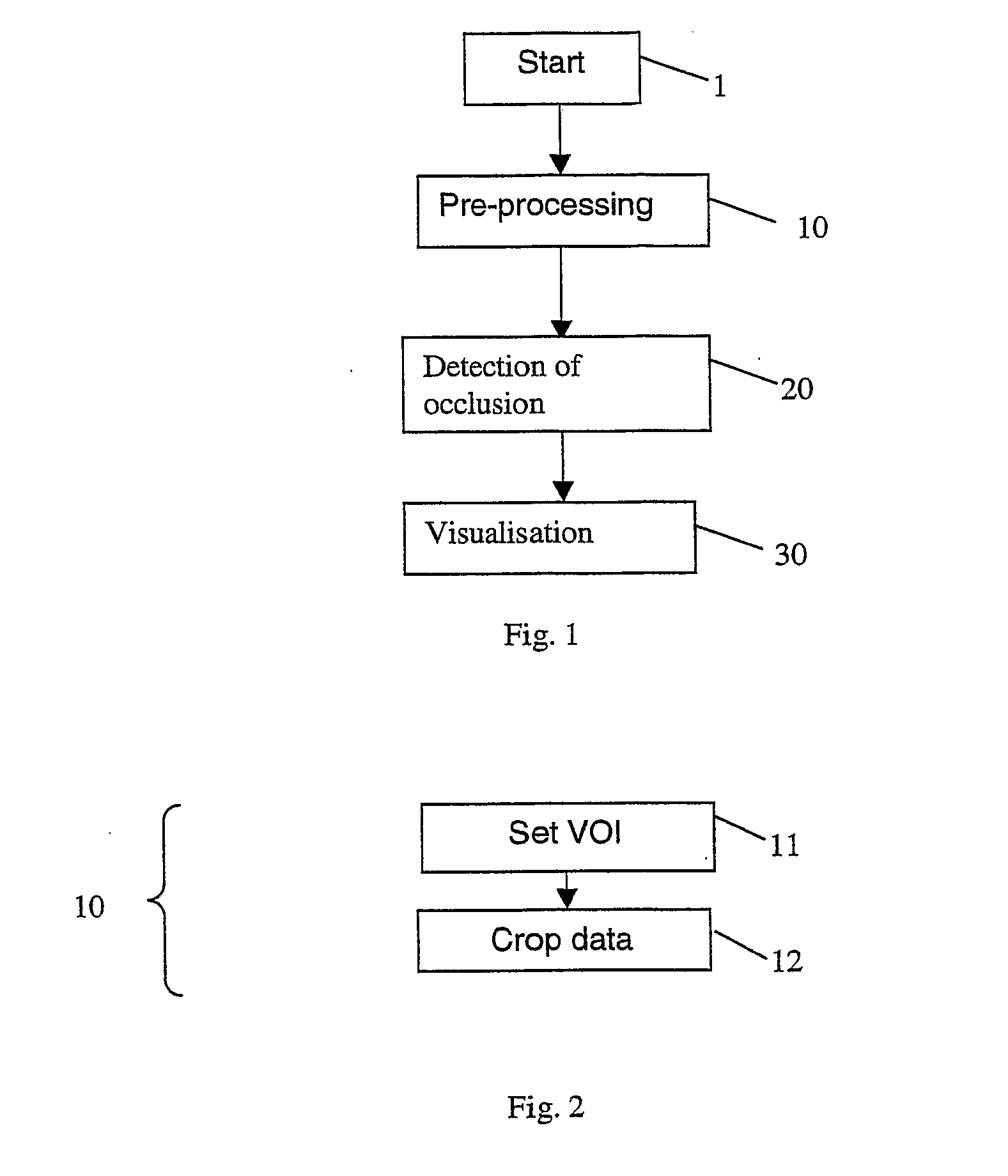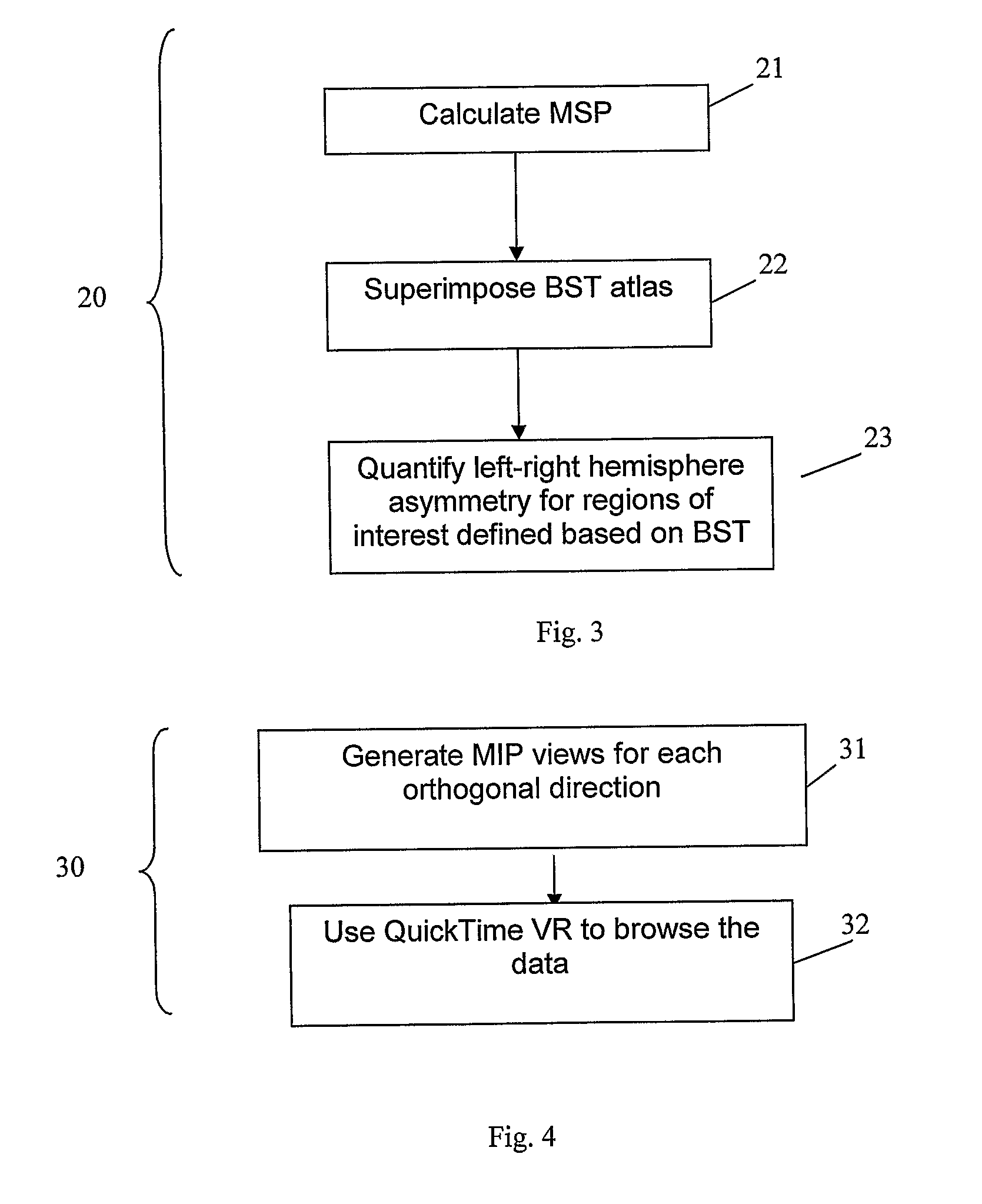Detection and localization of vascular occlusion from angiography data
a technology of angiography and localization, applied in image data processing, medical science, instruments, etc., can solve the problems of time-consuming whole procedure of iso-surface segmentation and surface display
- Summary
- Abstract
- Description
- Claims
- Application Information
AI Technical Summary
Benefits of technology
Problems solved by technology
Method used
Image
Examples
Embodiment Construction
[0026]An embodiment of the invention will now be described with reference to FIG. 1. The embodiment takes as its input, at step 1, a set of three-dimensional volumetric angiographic data, which has been acquired with any suitable imaging technique, such as magnetic resonance angiography (MRA), computed tomography angiography (CTA) or X-ray rotation angiography
[0027]In step 10, the method pre-processes the volumetric angiographic data prior to their analysis and visualization. The sub-steps of the pre-processing step 10 are shown in FIG. 2.
[0028]The volumetric angiographic data typically depicts not only the vessels but also other structures including scalp, skull, muscles, fat, and some other bones. To facilitate analysis, some unnecessary structures are eliminated by setting a suitable volume of interest (VOI) (sub-step 11), and removing the voxels outside this volume (“cropping”—sub-step 12). The VOI can be set in several ways, depending on the specific application. In particular,...
PUM
 Login to View More
Login to View More Abstract
Description
Claims
Application Information
 Login to View More
Login to View More - R&D
- Intellectual Property
- Life Sciences
- Materials
- Tech Scout
- Unparalleled Data Quality
- Higher Quality Content
- 60% Fewer Hallucinations
Browse by: Latest US Patents, China's latest patents, Technical Efficacy Thesaurus, Application Domain, Technology Topic, Popular Technical Reports.
© 2025 PatSnap. All rights reserved.Legal|Privacy policy|Modern Slavery Act Transparency Statement|Sitemap|About US| Contact US: help@patsnap.com



